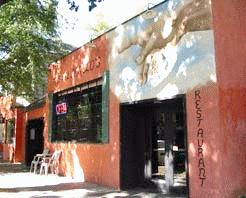
A year ago, my parents celebrated their 55th wedding anniversary. As part of the celebration, my brothers and sister and I did a family cookbook. One of the recipes that my sister included was for oven roasted tomatoes. Earlier this summer, we had a family get together at my brother’s house, and my sister mentioned the tomato recipe, and it got me curious.
So this week, my wife went to the farmers market and I asked her to buy a peck of tomatoes so I could roast a bunch. She brought back a bag full of beautiful, ripe Roma tomatoes. As I reviewed the recipe, I realized I had a few questions. So I called my sister.
Q: Your recipe says roast at 350 for three hours. That seems kind of hot for too long. Don’t they get dried out?
A: Well, I have a convection oven, so I only set it for 325. And with a convection oven, it doesn’t go a full three hours.
Q: Oh, well I have a convection oven, too. So I guess I won’t do it at the heat and time that the recipe says. Also, we bought Roma tomatoes rather than regular round tomatoes. Do you think that makes a difference?
A: Well, Romas have less water, so they’ll probably roast down quicker than three hours. The main thing is to roast them until they collapse and the water has evaporated. Then all that’s left is the oil with a nice, concentrated tomato essence that you can use in other recipes. Another thing to remember is to line the pan with parchment paper so that the tomatoes don’t stick.
(Actually, the recipe in the anniversary cookbook doesn’t say anything about parchment paper.)
Q: I don’t have parchment paper. Do you think a silicone liner will work?
A: I don’t have a silicone liner. But it should work ok.
My sister’s recipe is below. I’ve modified it to reflect the conversation we had and my experience roasting the tomatoes we bought. Like so many things, the recipe is really just a guideline. The thing is, you want to roast the tomatoes until most of the moisture is cooked out of them, and they are flat and concentrated on the roasting pan.
We used the roasted tomatoes on a pizza. We chopped them up and spread them over the pizza crust, then sprinkled with chopped fresh basil and oregano and topped with Gorgonzola cheese and parmesan. Turned out very nice. Thanks, Joan.
1 c. olive oil
12-15 tomatoes cut in half
Salt
Sugar
Balsamic vinegar
4 cloves sliced garlic
2 tbsp. fresh thyme leaves
Set oven at 325. Line a 11x17-inch pan with foil. Coat the pan with oil. Arrange tomato halves on pan. Sprinkle with salt, sugar, and vinegar. Distribute garlic and thyme leaves over tomatoes. Drizzle with oil. Roast until tomatoes are concentrated and collapsed. (This will depend on how big the tomatoes are and how much water they contain, 1½ -3 hours.)
You can preserve the roasted tomatoes by layering in a pan, separated by wax paper, and then freezing them.
I modified my sister’s recipe thusly: I did use a silicone mat on one pan. But on the other pan, I just oiled the pan and placed the tomatoes directly on it. That worked ok for me. I also used garlic powder instead of sliced garlic, and I didn’t use any sugar. As noted in my introduction, I used Roma tomatoes which are smaller than regular tomatoes, so I used a lot more than 12-15 tomatoes per pan.
Lesson: Technique is more important than quantities or precise recipe specifications. What you’re looking for is a concentrated, collapsed tomato that still retains its shape. Just pay attention while its roasting and pull them out of the oven before they start to dehydrate.
Enjoy.
 My former boss, the one who rented a villa in
My former boss, the one who rented a villa in 





